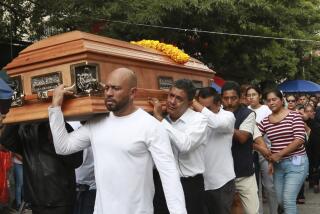5 Central American Leaders Confer : Summit Starts With Hope for Peace, Democracy, Progress
- Share via
COSTA DEL SOL, El Salvador — Five Central American presidents began a summit today with predictions that their two-day meeting will contribute to peace, democracy and progress in the troubled region.
The leaders appeared buoyed by the mere fact of being under the same roof after six months of postponements, delay and dispute over the summit’s prospects, agenda and date.
“I am sure that we, with optimism, will analyze efforts we’ve made . . . and search for favorable solutions that will promote peace and progress in Central America,” said Salvadoran President Jose Napoleon Duarte in brief comments inaugurating the meeting.
He was flanked by Presidents Jose Azcona Hoya of Honduras, Daniel Ortega of Nicaragua, Oscar Arias Sanchez of Costa Rica and Vinicio Cerezo Arevalo of Guatemala.
All except Ortega, who wore his green Sandinista army uniform, wore casual attire fitting the climate and ambiance at this seaside resort complex 40 miles southeast of San Salvador.
After Duarte’s statement, the presidents began work in a closed session.
The chief executives will analyze the successes and failures to date of the Esquipulas II peace plan, signed by the same five men in Guatemala on Aug. 7, 1987. The plan, also known as the Arias plan for its principal architect, was designed to promote peace and democracy.
Arias, who won the 1987 Nobel Peace Prize for the plan, said upon arrival that the meeting will “re-establish our credibility with the Central American people and the entire world.... Our peoples are tired. Without peace there is no possibility of improving conditions of life for Central Americans. This is a historic responsibility that we the five presidents have.”
A decade of civil conflicts and economic depression has transformed the once-promising region of 25 million inhabitants into one of the world’s most turbulent zones.
An estimated 160,000 people have been killed in the region’s wars in the last decade. Most Central Americans live in extreme poverty.
More to Read
Sign up for Essential California
The most important California stories and recommendations in your inbox every morning.
You may occasionally receive promotional content from the Los Angeles Times.













